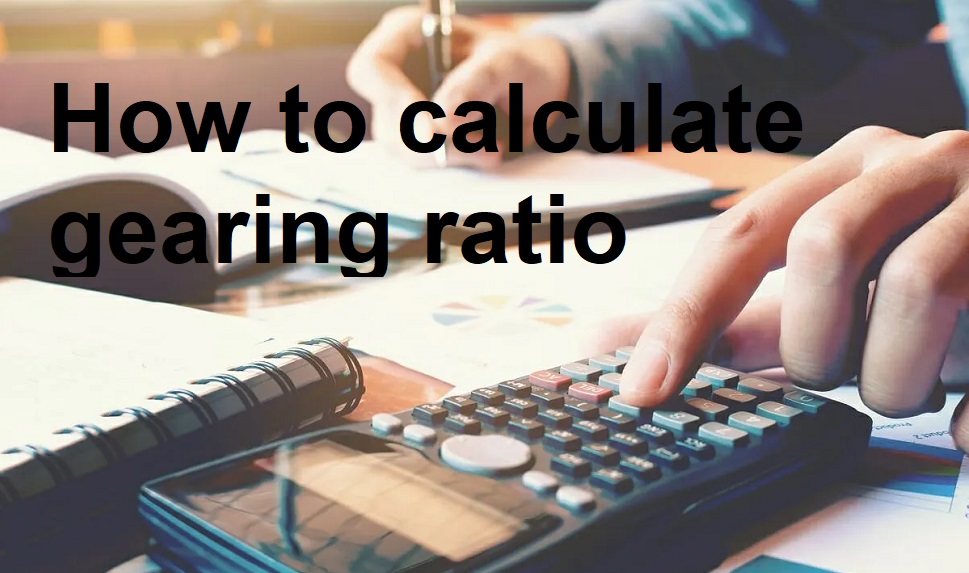
All such information is provided solely for convenience purposes only and all users thereof should be guided accordingly. Finance Strategists has an advertising relationship with some of the companies included on this website. We may earn a commission when you click on a link or make a purchase through the links on our site. All of our content is based on objective analysis, and the opinions are our own. Hence, the capital provided by these two is said to offer a fixed return.

Liquidity Ratios (Financial Ratios Explained)
Our work has been directly cited by organizations including Entrepreneur, Business Insider, Investopedia, Forbes, CNBC, and many others. Our goal is to deliver the most understandable and comprehensive explanations of financial topics using simple writing complemented by helpful graphics and animation videos. We follow strict ethical journalism practices, which includes presenting unbiased information and citing reliable, attributed resources.
Gearing Ratios: Definition, Types of Ratios, and How to Calculate
Since this is less than 4 and does not meet the bank’s expected ratio, it will tax forms and what you need them for now have to provide a guarantor or mortgage of the property as stipulated.
Price to Sales Ratio: A Key Metric for Understanding Company Value
Going uphill, riding a bike is easier if you are in a low-speed gear. Doing so results in better torque, providing more power when going uphill. This may mean we have to pedal more, but our ascend will be much easier. A bicycle sprocket-and-chain mechanism is much like a rack-and-pinion setup. The chain acts as a rack gear, directly transferring the motion to the rear bike sprocket (see the bike gear calculator).
Learn At Your Own Pace With Our Free Courses
In the short term, the gearing ratio can therefore “soar” by going above 1 (or 100%). But if an industrial company generates sufficient cash flow to repay this debt, the gearing ratio will gradually decrease to reach an acceptable rate. For business executives, a debt to equity ratio is probably one of the most important indicators of the financial health of their company. In addition to assessing their dependence on banks, a gearing ratio measures their capacity to incur debt from them. Note that in addition to the debt to equity ratio, there are several debt ratios that compare a company’s equity to its borrowed funds.
- It’s more susceptible to downturns in the economy and the business cycle because companies that have higher leverage have higher amounts of debt compared to shareholders’ equity.
- First, calculate the gearing ratio using the Debt-to-equity ratio.
- Companies with a higher proportion of debt are more susceptible to downturns in the economy.
- This relationship in which the gear turns at one-third of the pinion speed is a result of the number of teeth on the pinion and the larger gear.
- ● For instance, the total debt to equity ratio can reflect a risky financial structure without actually indicating a poor financial situation.
Do you own a business?
This relationship in which the gear turns at one-third of the pinion speed is a result of the number of teeth on the pinion and the larger gear. This relationship is called the gear teeth – pinion teeth ratio or the gear ratio. For this reason, it’s important to consider the industry that the company is operating in when analyzing it’s gearing ratio, because different industries have different standards. Long-term debt includes loans, leases, or any other form of debt that requires payments at least a year out. Please note that the use of debt for financing a firm’s operations is not necessarily a bad thing. The extra income from a loan can help a business to expand its operations, enter new markets and improve business offerings, all of which could improve profitability in the long term.
Using a company’s gearing ratio to gauge its financial structure does have its limitations. This is because the gearing ratio could reflect a risky financial structure, but not necessarily a poor financial state. While the figure gives some insight into the company’s financials, it should always be compared against historical company ratios and competitors’ ratios. A higher gearing ratio means the company is more reliant on debt financing, while a lower ratio means it is financed mostly through equity.
Gearing ratios are financial ratios that compare some form of owner’s equity or capital to debt or funds borrowed by the company. Gearing is a measurement of the entity’s financial leverage which demonstrates the degree to which a firm’s activities are funded by shareholders’ funds versus creditors’ funds. The gearing level is arrived at by expressing the capital with fixed return (cwfr) as a percentage of capital employed.
Financial institutions and creditors primarily use gearing ratios as they are concerned with the repayment capacity of the firm. Accordingly, they can draft the terms and conditions of the proposed loan. Internal management also uses these ratios to analyze their future profit and cash flows. Usually, where high investment is involved, gearing ratios tend to be higher as they have to afford those. Usually, where high investment is involved, gearing ratios tend to be higher as they have to afford those CapEx via externally secured fundings.
A gearing ratio is a measure used by investors to establish a company’s financial leverage. In this context, leverage is the amount of funds acquired through creditor loans – or debt – compared to the funds acquired through equity capital. Gearing refers to the utilization of debt financing to amplify exposure to assets and potential returns. Companies deploy gearing to leverage equity and expand operations, with the gearing ratio quantifying the degree to which financial leverage is employed in the capital structure.

